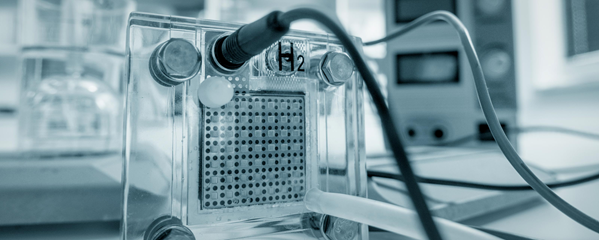- About Ajou
- Admission
- Academics
- Research
-
International
International
- Campus Life
-
News and Event
News and Event
-
AUT
AUT
Major Research Result
NEW A Novel Heterostructure Design for the Photoelectrochemical Production of Hydrogen
- 2022-10-25
- 3583
The unique heterostructure of the photoanode displays enhanced charge collection, providing valuable insights into the design of efficient fuel cells
Ongoing climate change has made the development of new renewable energy sources the need of the hour. The hydrogen production through water-splitting reactions is one of the most promising options, but the commercial viability of current technologies is limited. Recently, researchers developed a novel, dual textured heterostructure that provides key insights into the design of efficient water-splitting electrodes.

The development of an efficient, high-performance photoanode for water-splitting reactions is the major technological bottleneck to the production of hydrogen through photoelectrochemical water-splitting cells. This research presents a novel, unique heterostructure design for photoanodes that displays enhanced performance.
One of the most promising technologies to solve the dual problems of the energy crisis and climate change is photoelectrochemical (PEC) water-splitting. PEC water-splitting is the process through which water molecules are split into hydrogen and oxygen through a light-catalyzed reaction in an electric cell. A key component of these cells is the photoanode, the light-sensitive negative electrode. The design of an efficient, high-performance photoanode is one of the technological bottlenecks to the commercialization of PEC cells.
Heterostructure engineering—the combination and assembly of dissimilar materials into a single substrate—is a common approach to improving the design and subsequent performance of photoanodes. But research on the topic has, thus far, been limited to core/shell and planar heterostructure designs.
Recently, researchers—led by Prof. In Sun Cho of Ajou University, Republic of Korea—have developed a novel heterostructure design with the potential to overcome the performance limiting factors of photoanodes. “Our novel design is a dual textured heterostructure that synergistically combines heterojunction (the interface between two dissimilar semiconductors) and texture/facet (crystallographic orientation and exposure of material planes) engineering,” explains Prof. Cho. Their work has been published in Chemical Engineering Journal.
In this study, the research team first grew Sb:SnO2, or antimony-tin oxide (ATO), nanorods on fluorine-enriched tin oxide substrate. Next, they spin-coated a layer of BiVO4, or bismuth-vanadium oxide (BVO), on the nanorods, followed by a second hydrothermal growth to synthesize the heterostructure. The unique heterostructure exhibited a dual texture with intimate heterojunctions. It also has two different facets. Furthermore, it displayed enhanced charge collection and quadruple photocurrent density compared to its single-textured counterpart.
Discussing the future implications of the work, Prof. Cho says, “The research presents new ideas for heterojunction design that can be widely applied to energy production and storage technology devices, like fuel cells.”
The optimized synthesis method presented here can also be used to control morphology during the synthesis of a variety of other oxides, thereby extending its applications to energy fields beyond PEC water-splitting.
Reference
Authors: | Yoo Jae Jeong1,2, Sung Won Hwang1,2, Settasit Chaikasetsin3, Hyun Soo Han3, In Sun Cho1,2,* |
Title of original paper: | Dual textured BiVO4/Sb:SnO2 heterostructure for enhanced photoelectrochemical water-splitting |
Journal: | Chemical Engineering Journal |
DOI: | 10.1016/j.cej.2022.135183 |
Affiliations: | 1Department of Materials Science & Engineering, Ajou University, Republic of Korea 2Department of Energy Systems Research, Ajou University, Republic of Korea 3Department of Mechanical Engineering, Stanford University, United States |
*Corresponding author’s email: insuncho@ajou.ac.kr
About Ajou University
Founded in 1973, Ajou University has quickly grown to become one of the top universities in the Republic of Korea. With over 15,000 students and 50 research centers in diverse fields, Ajou University partakes in the largest national research and graduate education project funded by the Korean Ministry of Education. In line with its recently reformed vision, Ajou University’s goal is to change society by connecting minds and carrying out high-impact research to improve the welfare of people in and outside Korea.
Website: https://www.ajou.ac.kr/en/index.do
About the author
Prof. In Sun Cho is an Associate Professor of Materials Science & Engineering at Ajou University, Republic of Korea. He received his PhD in Materials Science & Engineering from Seoul National University. Before coming to Ajou University, he completed his postdoctoral training at the Xiaolin Zheng lab at Stanford University. His group develops high-performance energy and catalysis devices. They are also involved in research on new and inexpensive nanomaterials with high functionalities.
